You are using an out of date browser. It may not display this or other websites correctly.
You should upgrade or use an alternative browser.
You should upgrade or use an alternative browser.
meltdown -- common rail style
- Thread starter jlibert
- Start date
TxDiesel007
Uncommon CR problemed
- Joined
- Jul 15, 2007
- Messages
- 1,648
obviously you havn't been reading, yes stock trucks have been melting too. Usually the stock ones were on a long uphill pull or had a trace of a bad injector. Not to sure about the 6.7 s but they have went to a piston style similar to the 03/early 04 s which don't tend to burn up as commonly as 04.5 and up.
I may have missed the few and far between stock truck in this thread.. its understood, but the reality is on these threads, most of the melted trucks were modded in some aspect.. even an intake and exhaust or something small is not stock, but still it was my bad...
But again, as others want to know what is the magic formula for timing on these beasts?
and in YOUR (and others) opinions what is killing these trucks more? RP? or timing? or a combination of both?
correct me if im wrong, im still learnin the CR.. more rail pressure, equals more fuel, hotter cylinder temps, yet a cleaner burn with the higher timing (if available from a pressure box or smarty) which in turn leads to too much heat in the piston chamber thus the melted piston?
but since these crs burn cleaner than most, on a long uphill pull or bad injector it would be the same effect due to the cylinder temps being to hott... even with stock timing? and result in the melted piston?
again i am reading, but trying to put things in simpler terms, and making sence of it all.. sorry if i test anyone and thanks to those who are willing to teach me
Last edited:
He only saw a max of 1400 egt.
Joe
Aluminum melts at?...............:bang
TMONEYDIESEL
Comp Diesel Sponsor
- Joined
- Jan 21, 2007
- Messages
- 8,706
about 200 degrees before that,
Scooter's Roofing
New member
- Joined
- Oct 16, 2006
- Messages
- 17,007
Aluminum melts at?...............:bang
aparently you don't comprehend that EGT doesn't = piston crown temp
ever wave your hand through a candle flame or a camp fire?
Joesixpack
Pull'n it.
- Joined
- Apr 4, 2008
- Messages
- 4,118
How does pressure add timing? Commanded open time is commanded open time. Pressure does not effect that. If pilot is working and you have larger injectors with pressure the pilot can become a power shot but. Pressure does not increase the timing over commanded.
Those timing # seem low to me. If I had to guess that is because of pilot becoming to big. I wonder what the injectoin shot is time wise at make timing.
For example. If you are at 3000rpm with a max timing of 21* and a injection shot of say 2000us(microseconds) then your main shot is centered. Meaning at that RPM your 2000us shot takes 42* of total crank rotation. So you open at 21* BTDC and close at 21 ATDC. If you have a bigger shot it gets worse. 3000us =54* of crank rotation. Which means open at 21*BTDC and closed at 33*ATDC. Now to melt a piston it take heat and time to get the piston hot. If you add both pilot and post injection to the main you can easily be injecting fuel for close to 90* of rotation. With that much exposor it would take less peak heat to melt a piston.
Using my Dmax an example. No Pilot over 2000rpm. No post at all. Peak timing of 35*. EGTs are around 1600 when pulling with no water. I pulled injectors and used a scope to look at pistons last week . Everything looked fine.:rockwoot:
Pull the fca at idle on a common rail and listen to it, to maintain idle at 20k instead of 6k it pulls a bunch of duration, the same amount of fuel injected in way less time = advanced timing considering average time for injection.
jlibert
New member
- Joined
- Jun 28, 2007
- Messages
- 3,454
Just got back from a trip to Oregon.
We pulled a 53' enclosed trailer with an 06 mega cab cummins. The truck has an exhaust system and a dr. P. pressure box, and is otherwise stock. On some grades we saw 1350-1400 degrees for over 2 minutes at a time without any issues. The truck has over 120k miles on it and has been pulling this trailer around the country for the last 60k miles.
We pulled a 53' enclosed trailer with an 06 mega cab cummins. The truck has an exhaust system and a dr. P. pressure box, and is otherwise stock. On some grades we saw 1350-1400 degrees for over 2 minutes at a time without any issues. The truck has over 120k miles on it and has been pulling this trailer around the country for the last 60k miles.
JOHNBOY
ZF6 Sled Puller
- Joined
- Feb 1, 2007
- Messages
- 1,854
Pull the fca at idle on a common rail and listen to it, to maintain idle at 20k instead of 6k it pulls a bunch of duration, the same amount of fuel injected in way less time = advanced timing considering average time for injection.
The only way to advance timing is to change the open point. More pressure gets more fuel in before TDC but it does not change timing. I see your point but fuel volume before TDC is not timing before TDC.
When you go to bigger injectors you can use less timing but only to a point. You still need time(not timing) for the fuel charge to ignite. The more RPM you turn the more this becomes apparent.
joelc79
New member
- Joined
- Oct 28, 2008
- Messages
- 3,075
Just got back from a trip to Oregon.
We pulled a 53' enclosed trailer with an 06 mega cab cummins. The truck has an exhaust system and a dr. P. pressure box, and is otherwise stock. On some grades we saw 1350-1400 degrees for over 2 minutes at a time without any issues. The truck has over 120k miles on it and has been pulling this trailer around the country for the last 60k miles.
So whats the status with yours... anything your changin?
jlibert
New member
- Joined
- Jun 28, 2007
- Messages
- 3,454
So whats the status with yours... anything your changin?
I've been tied up with racing, testing, and interviews last week. I'm going to try to get it to the machine shop early this week. Early pistons, ecm, nozzles, H2 cam.
07dodge
Most Hated
- Joined
- Jun 21, 2008
- Messages
- 1,395
SW9, timing 4, rail pressure 1
mp8 80%, 26k max rail pressure
EGT 1400 MAX
Flux 4
64/S480
Plenty of air, mild injector, mild rail pressure, timing dialed back, conservative egt, no drugs.
video of day it happened.......
my pull at :30 sec. in
YouTube - Ceres Sled Pull 7/11 www.brownsdiesel.com
Thanks in advance for all of your input.
-J.P.

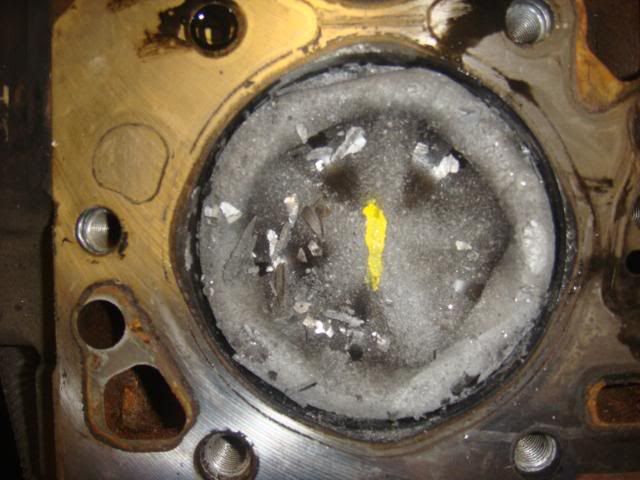
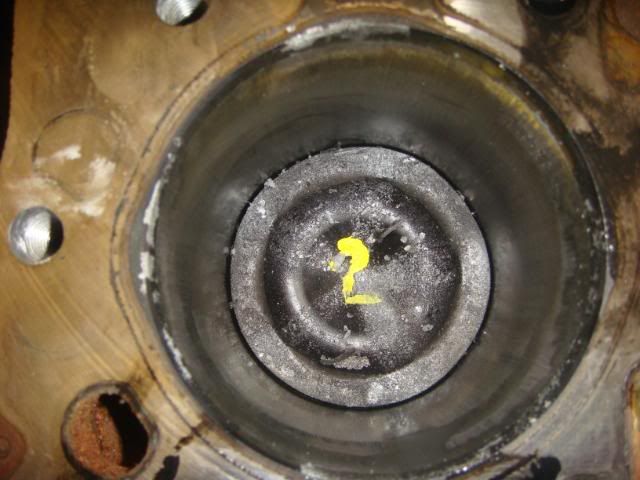
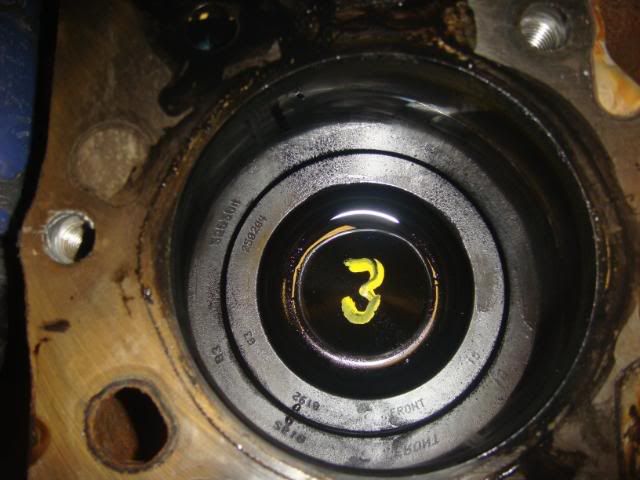
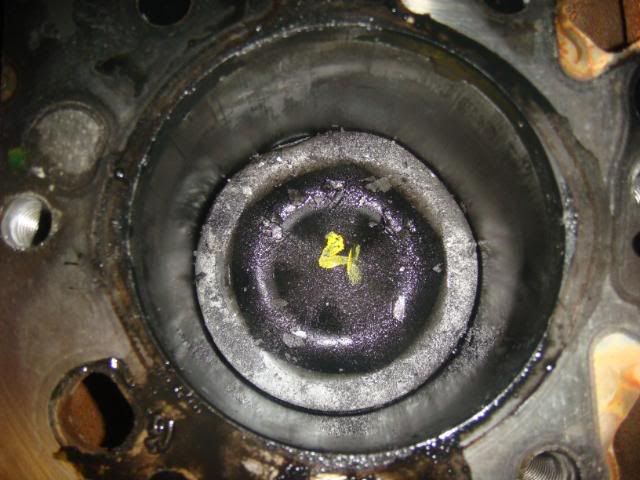
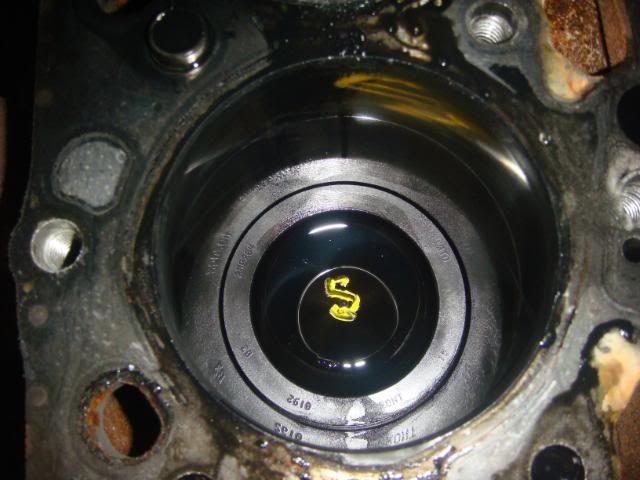
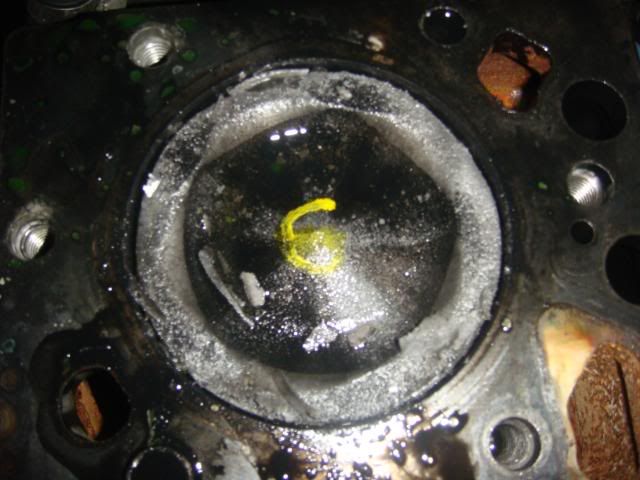
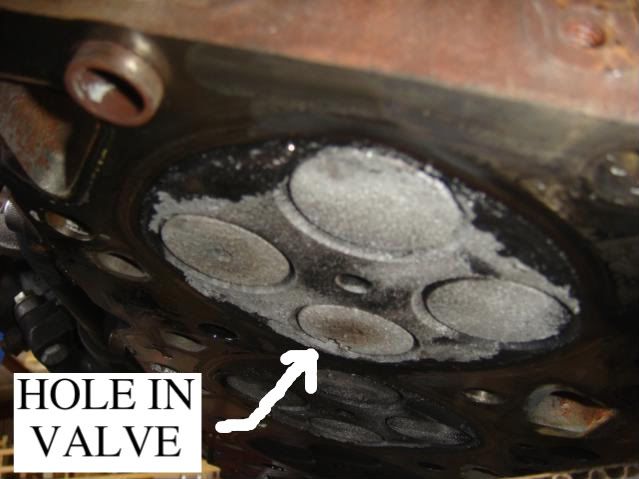
Your #1 piston looks similiar to the #4 i just took out of mine. Only the edges of mine melted all of the aluminum off down to the ring land, and then burn through the top ring land down to the second ring, and melted a hole into the oil galley behind the second ring. Which then started to melt a hole in the cylinder wall, that resulted in boring and sleeving #4!!
JOESHTRDDSL
Nothing Special
- Joined
- Jul 1, 2008
- Messages
- 964
Is it possable that the EGR effect built into the cams on the 04.5 and up engines could be adding to the problem? How many of these melted engine had stock cams? Just thinking out loud. Could the sustained high RPM combined with the higher EGT and the cam keeping some of that hotter than normal exhaust in the cylinders be elevating cylinder temps even higher than what is thought to be?
Joe
Joe
07dodge
Most Hated
- Joined
- Jun 21, 2008
- Messages
- 1,395
The only way to advance timing is to change the open point. More pressure gets more fuel in before TDC but it does not change timing. I see your point but fuel volume before TDC is not timing before TDC.
When you go to bigger injectors you can use less timing but only to a point. You still need time(not timing) for the fuel charge to ignite. The more RPM you turn the more this becomes apparent.
Bull, looks as if you need to study diesel injection a little more!



